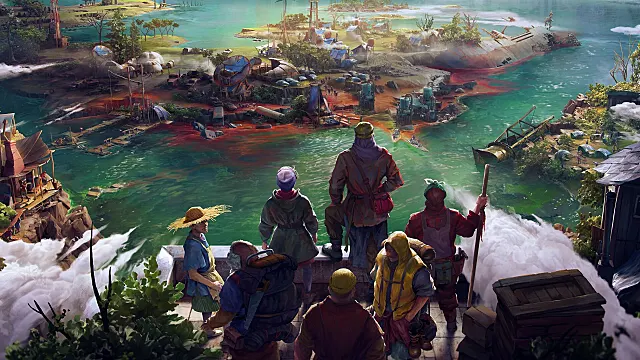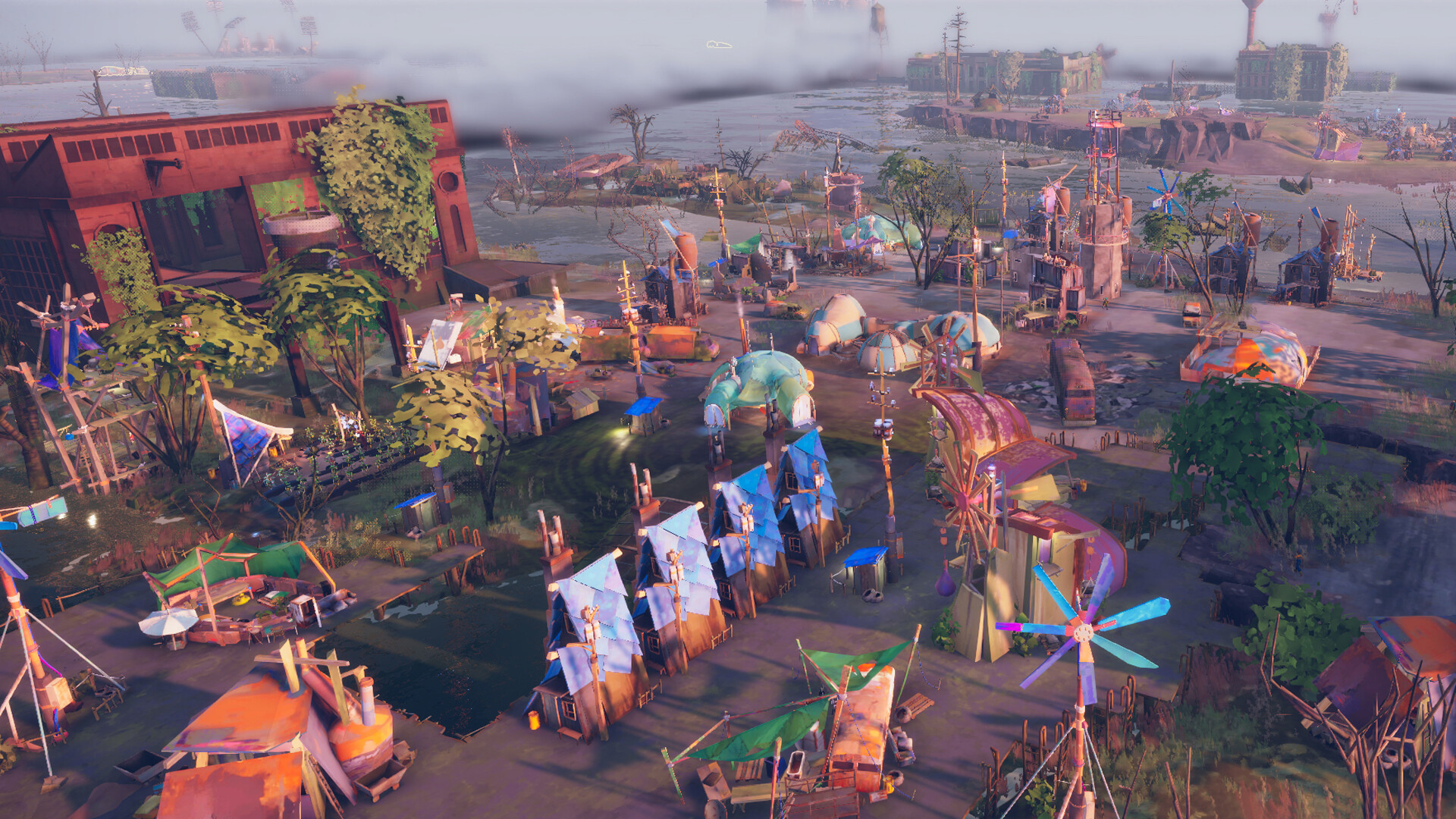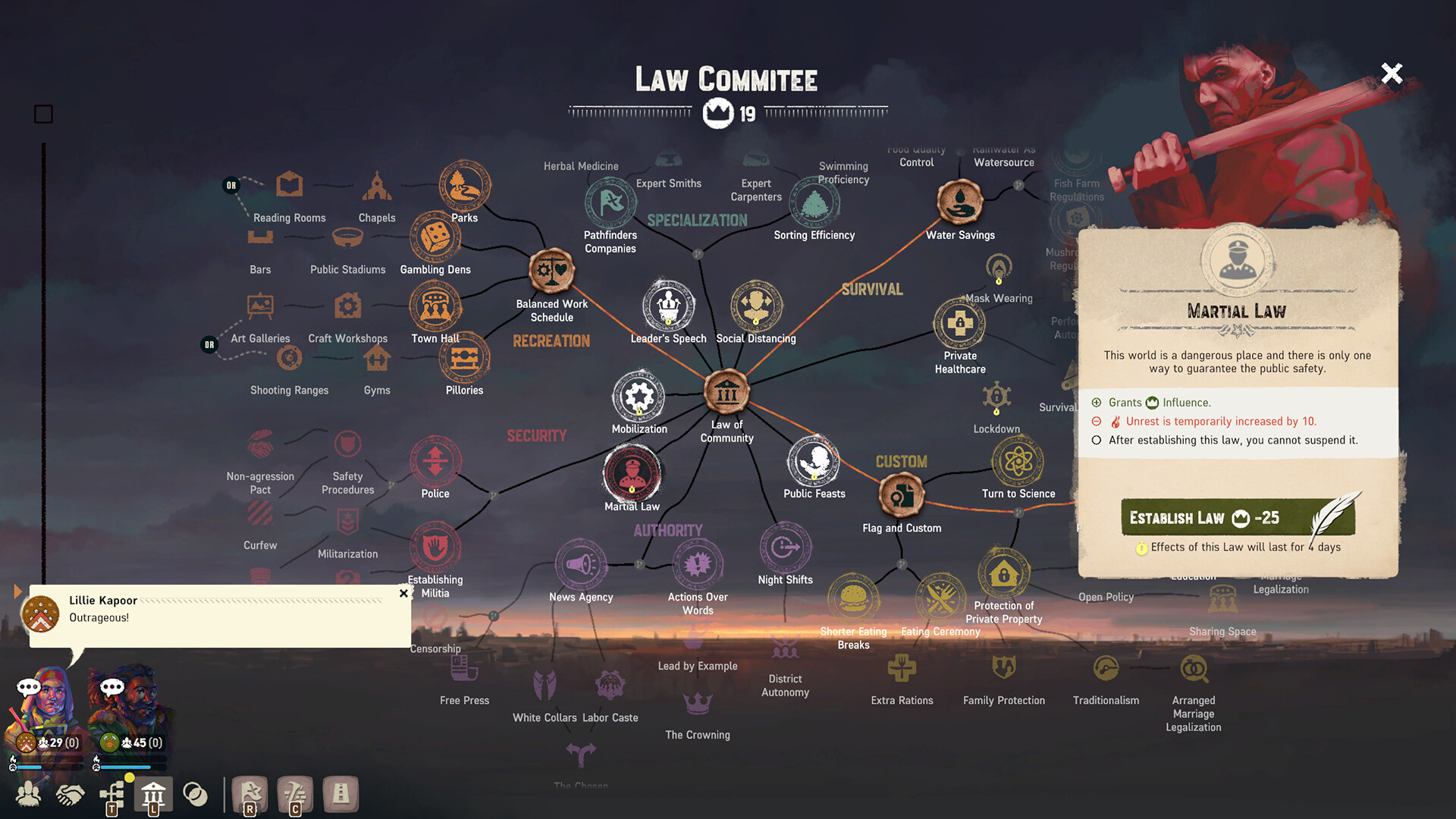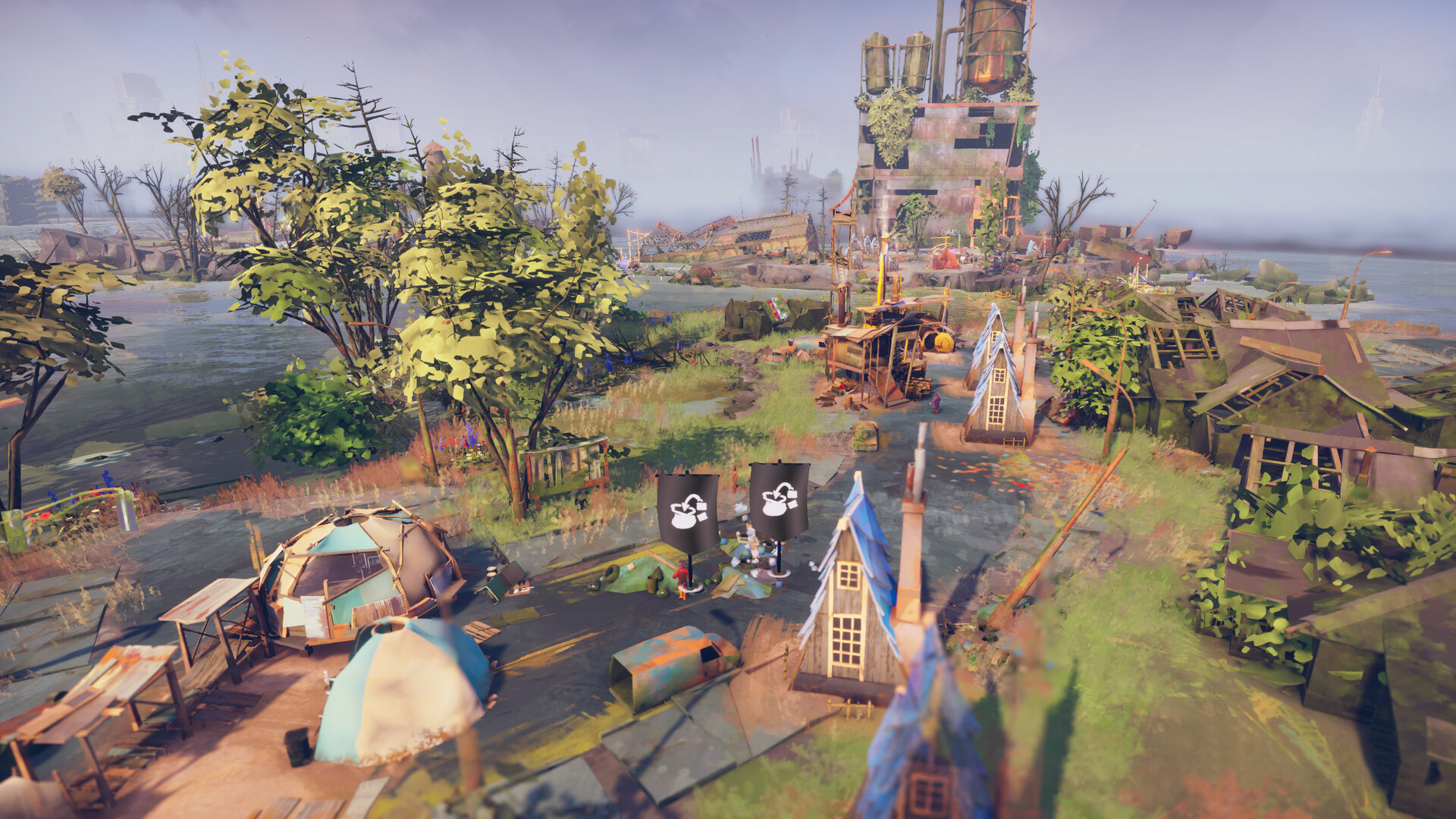Post-apocalyptic games are usually fairly dreary and oppressive affairs, but Floodland takes a different approach, weaving themes of hope and exploration into the overall experience. It’s a survival city builder that tries to inject more personality and personal storytelling into things, and even though that idea doesn’t always land, Floodland’s mechanics are usually enough to keep you chugging along, always eager to play a little more and optimize your settlement.
The story of Floodland takes place after a climate change crisis has annihilated most of the world’s population and sent much of the land underwater. All you know is something called The Event caused all of this destruction, and now you have to lead a small clan down the path to rebuilding humanity.
At the start of each randomly generated playthrough, you’ll choose from one of four clans to lead, each coming from its own distinct background, which then leads to specific strengths and bonuses. For example, the Fire Brigade is made up of former first responders, while the Good Neighbors is a tight-knit group that used to live in the same community.
There’s a basic story that ties all the gameplay together, with each new bit of story reading like a journal entry, illustrating the humans at the heart of everything. Interestingly, that idea translates directly to gameplay, as one of your most important resources ends up being the people themselves.
Floodland’s unique aesthetic paints each map with a series of islands and landmasses, separated by both shallow and deep bodies of water. A thick fog coats everything, meaning exploration is the first thing you need to focus on, finding essential resources, spots to set up gathering buildings, and abandoned structures to explore.
Floodland can be pretty tough to wrap your head around at first, even with a wealth of tutorials. There are over a dozen resources you’ll need to manage eventually, although they get introduced incrementally. There’s both safe food and unsafe food, with the latter having the potential to poison or make your people sick. On top of that, you layer in water for survival, plastic for building, wood that you turn into planks, rock, metal, and the list goes on.
Of course, to gather all these resources, you’ll need people, splitting your population between your various gathering buildings and your storage buildings, where you can assign them exploration and construction tasks. This creates an interesting dynamic where you’re constantly trying to balance your survivors’ tasks and exploration to find additional people trapped in buildings to bring into your clan.
As you find these other survivors, however, they have clans of their own, all with differing ideals, which can create tension in your settlement. This is where Laws, Floodland’s other major gameplay system, comes into play. As time progresses, you’ll slowly build a resource called Authority, and this can be used to pass Laws that affect your settlement at large. These Laws are largely grouped into four categories that focus on martial law, economic expansion, peace, and leisure activities.
Laws balance the varying opinions of your different clans, and each clan has a tension meter that goes up as you do things they don’t like. Consequently, people will start to steal extra resources, and if the meter gets high enough, an entire clan can even decide to leave.
While these systems, in theory, could help create some deep narrative drama, that’s seldom the case. It’s an issue endemic with Floodland: There’s simply not enough narrative variety. You end up seeing the same issues and lines over and over as unrest fluctuates back and forth, and the system ends up feeling more like a bother meant to simply slow your progress.
While it can be hard to piece together all these disparate systems, there’s an undeniable hook to Floodland’s gameplay loop. The exploration mechanics bring a unique take on the survival city-builder, and the game does a good job of doling out resources and rewards at a steady pace, meaning you always have something to upgrade and improve.
While Floodland’s bright aesthetic really works, there are some performance issues that I ran experienced deep into playthroughs. As your settlement grows larger, it’s fairly common for the framerate and performance to suffer, and once I reached a certain settlement size, the fast-forward button would be nearly impossible to use because of how it tanked the framerate. This is obviously something that can be ironed out with future patches, but it undeniably had an impact on the experience, slowing down my overall progress.
Floodland Review — The Bottom Line
Pros
- Unique concept unlike any other city-builder.
- Strong gameplay loop.
- Gorgeous aesthetic and visual style.
Cons
- Too many resources to keep track of.
- Narrative trappings ultimately don’t feel satisfying.
- Performance issues as your settlement grows larger.
Floodland’s biggest selling point is its unique setup, and for the most part, that helps it stand apart from other city-builders. There’s an undeniable learning curve as you grapple with dozens of different systems and resources, but if you can overcome that, there’s a satisfying core gameplay loop underneath.
More than anything, Floodland feels like a game that could really benefit from some updates and content changes. As it stands, there’s a unique city-builder that fans of the genre will likely enjoy, but it could be one of those games that really turns into something special with the right support.
[Note: Ravenscourt provided the copy of Floodland used for this review.]










Published: Dec 4, 2022 12:12 am